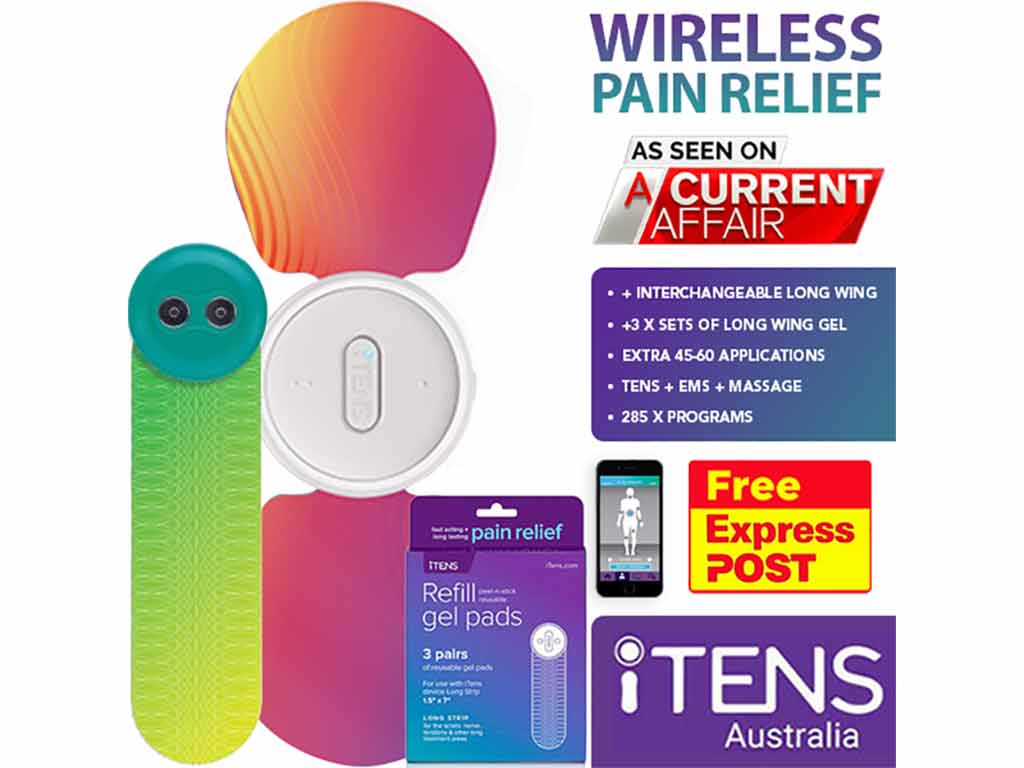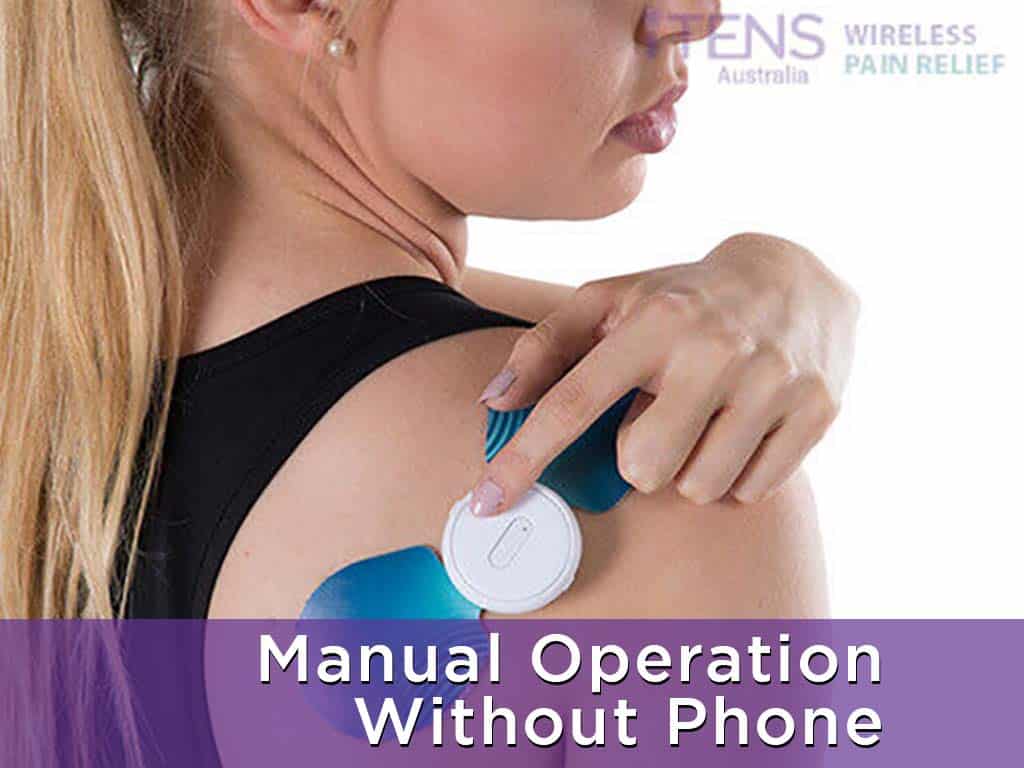
Transcutaneous Electrical Nerve Stimulation (TENS) is an effective treatment that uses electrical currents as a method of pain relief. Studies have suggested that TENS electrical stimulation can indeed improve the quality of life due to various reasons. Foremost, the electrical pulses can block pain signals from reaching the brain. Additionally, TENS can stimulate the release of endorphins and promote blood flow. Furthermore, the use of TENS treatment is non-invasive, drug-free, customisable, and cost-effective.
Numerous types of pain affects millions of people worldwide. This can have a detrimental effect on physical and mental well-being. Traditional pain management methods, like pain control medications, often come with side effects or may not provide the desired relief. As a result, individuals are seeking alternative forms of pain relief to alleviate their suffering and improve their overall quality of life. This article will present TENS therapy, including how it works and how to apply it.
What is TENS Electrical Stimulation?
TENS electrical stimulation is a therapy that utilises an electronic device to deliver electric currents to the underlying nerves via electrode patches placed on the skin. This stimulation for pain relief is commonly used by pain clinics, physical therapists, and health professionals. Additionally, individuals experiencing various painful conditions can incorporate TENS into their treatment solutions at home.
The TENS devices are available in wired and wireless forms. Wired TENS units typically feature electrodes that are connected to the device with physical wires. Meanwhile, wireless TENS units eliminate the need for lead cables. Hence, it provides greater freedom of movement while undergoing treatment. Users can control the therapy manually or on a smartphone or tablet via Bluetooth technology.
Nevertheless, both units extend various features. The main feature includes adjustable settings for the pulse rate, pulse intensity, and pulse duration. Also, it may come with different modes that cater to various conditions. Furthermore, some devices have built-in timers and pre-set programs for ease of use. The electrode pads used with the unit may also come in different shapes and sizes.
Treatable Conditions
- Acute pain: it refers to discomfort that comes suddenly. It is usually caused by postoperative pain, primary dysmenorrhea, labour pain, and period pain.
- Chronic pain conditions: it persists beyond the expected healing time. This may include conditions such as fibromyalgia, arthritis pain, and backaches.
- Neuropathic pain: this results from damage to the nervous system. TENS can provide relief for individuals with conditions like diabetic neuropathy, phantom pain, and sciatica.
- Musculoskeletal pain: it affects the muscles, bones, ligaments, tendons, and nerves. TENS is beneficial in managing ailments such as rheumatoid arthritis and osteoarthritis.
- Muscle-related discomfort: this can occur due to muscle overuse, tension, or injury.

How TENS Electrical Stimulation Works
TENS electrical stimulation operates on several analgesic mechanisms. One of the key ways TENS works is by stimulating the production of endorphins. These are the natural pain-relieving chemicals of the body. When electrical pulses are applied, they can trigger the release of endorphins. Nevertheless, these endorphins interact with specific receptors to reduce the perception of discomfort and produce a sense of well-being.
Another way TENS works is through the pain gate mechanism. According to this Theory of Pain Gate, the electrical currents from the TENS electrical device help to close the “pain gate” in the spinal cord. Hence, this effectively blocks the transmission of pain messages to the brain. By overwhelming the nervous system with electrical signals, TENS can effectively suppress the transmission of pain signals.
TENS therapy also influences blood flow. The electrical impulses can cause blood vessels to dilate. This improved blood circulation can promote body tissue healing and reduce inflammation. Additionally, the electrical currents from TENS can stream in low and high frequencies. Low frequencies typically operate below 10 Hz, while high frequencies operate above 50 Hz. These frequencies have varying therapeutic effects.
Benefits
Foremost, TENS therapy is non-invasive. It does not require any surgical incisions or invasive procedures. Secondly, TENS treatment is drug-free. It does not involve the use of pharmaceutical substances. Thirdly, the TENS units often come with adjustable settings. This customisability allows people to tailor the therapy based on specific needs and preferences.
Fourthly, TENS therapy is considered cost-effective. It eliminates the ongoing expenses of medication or invasive treatment. Moreover, portability is another notable benefit of TENS devices. The units are typically compact and lightweight. Lastly, TENS treatment can serve as an adjunctive therapy to other pain management solutions.

How to Apply TENS Electrical Stimulation
Applying TENS electrical stimulation therapy involves several simple steps. Firstly, it is crucial to identify the area of the body experiencing discomfort. Clean the skin in this area to remove oils, lotions, and dirt. Next, connect the sets of electrodes to the central machine via wires or to a smartphone via Bluetooth for wireless. It is essential to use the appropriate size and number of electrode patches.
After preparing the electrodes, place them on the skin over the treatment area. Adhering to the proper electrode placement is essential in this step. Also, avoid placing the pads on the head, eyes, mouth, throat, chest, bony regions, and broken skin. Once the electrodes are in place, turn on the TENS unit. This may involve adjusting the settings or choosing a pre-set program.
Nevertheless, professionals recommend starting with the lowest setting and gradually increasing it to a comfortable level. Throughout the TENS therapy, remain aware of any sensations that may arise. The duration of the treatment may last 15 to 30 minutes. After the TENS therapy session is complete, turn off the device and carefully remove the electrode patches from the skin.
Signs to See a Doctor
If the skin underneath the electrode placement area develops skin irritation, it may indicate an allergic reaction to the electrodes or gel used to adhere. Hence, seeking medical advice is vital. Moreover, if the individual experiences a significant increase in discomfort, it is essential to consult a medical professional. This could be a sign of an underlying medical condition that requires further evaluation.
While a mild tingling sensation is normal in the therapy, persistent or excessive numbness and tingling may indicate nerve compression. This requires medical attention. Additionally, any concerning reactions to the treatment (dizziness or faintness), should prompt the individual to see a doctor.
Conclusion
In conclusion, TENS electrical stimulation is a valuable and effective treatment option. It is a therapy that uses a wired or wireless device to send electrical currents to the body as a method of pain relief. Professionals and individuals commonly use these devices. Furthermore, TENS works based on different mechanisms. This includes the Gate Control Theory, the release of endorphins, and improving blood flow. Also, the electrical pulses can stream in low and high frequencies.
With such mechanisms, TENS therapy can treat various conditions. This may include musculoskeletal conditions, neuropathic pain, and muscle-related discomfort. Additionally, TENS provides numerous benefits. It is non-invasive, drug-free, customisable, cost-effective, portable, and can complement other treatments. Nevertheless, applying TENS treatment is easy. Locate the treatment area, place the electrode pads, and adjust the settings. However, it is essential to know the signs when to see a doctor.







